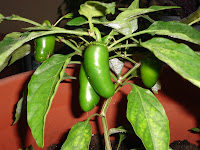Currently, the patio seedling garden is home to Red Burgundy Onions and Bulgarian Giant Leeks (among many other things). I've only harvested 1 Red Burgundy onion so far and that was from my first batch. This time around I planted more seeds and started them out right! Plant onion seeds about 3/8 inch deep and 1/2 inches apart. Rows should be about 15 inches apart. Once seedlings emerge, then to about every 3inches.
Some say it is best to choose a type of onion best suited for your area: Northern US: Long Day. Southern US: Short Day.
However, others say they grow many types of Onions just fine. Bunching onions grow well in all regions.
Depending on what type of onion you’re growing, will depend on the sunlight they require. Provide onions with 12 – 16 hours, depending on long day or short day onion.
The best soil for onions has organic material and neutral pH. (If your onions are too strong, the soil may be too acidic.) Onions like well drained soils, and the organic matter in the soil helps.
Onions like more water initially as they grow. As they mature, onions do not require as much water. Depending on how much rain you get, they may be okay with just rainwater. Just make sure they get some kind of water every 5-7 days.
Mulch will help maintain the right soil moisture level and reduce weeds. Remember, onions don’t like weeds. Weeds and onion, both, compete over the same soil nutrients. When weeding, be careful not to disturb the onion’s root system.
Maturity rates vary with each type of onion from 65 days to 115 days. Onions should be harvested in the morning, but avoid any morning dew on them. Lay them in row to cure or air dry for a few days. But place them in the shade. The onions can actually sunburn.
Companion Plants:
Growing Carrots around onions will be helpful.
Some plants actually are bad to the health of onion plants. Avoid these plants around onions: beans, peas, and parsley.
Happy Planting!!!



























